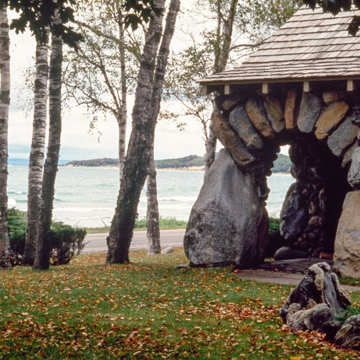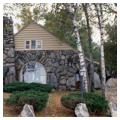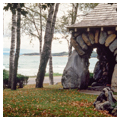The playful expressionistic or organic dwellings known locally as “dwarf,” “mushroom,” or “Hansel and Gretel” houses were designed and built, mostly for speculation, by visionary and self-trained local builder Earl A. Young, and were for sale or rent to romantics and dreamers on vacation. In addition to the dwellings in this block, Young built houses in his Boulder Park subdivision, an office at 224 Bridge Street (demolished), three houses on Round Lake, and the Weathervane Inn overlooking the harbor north of the bridge. Typical of his works, the residences on Park and Grant streets are diminutive, imaginative, and fantastic buildings of local limestone, fieldstone, and shipwrecked timber. They have undulating wood-shingle roofs and large fireplaces. Young's favorites were his own house at 306 Park Street and the inn at 111 Pine River Lane.
Born in Mancelona, a major railroad junction twenty-seven miles south of Charlevoix in Antrim County, Young (1889–1975) studied business at the University of Michigan. He read architectural journals, attended building shows, and constructed buildings intuitively from his own charcoal-drawn sketches. Owners of Young houses have included a college professor, a lawyer, a factory manager, an interior decorator, and a lieutenant governor of Illinois.





